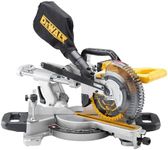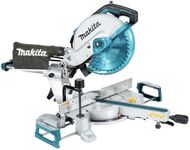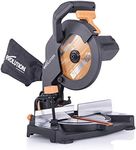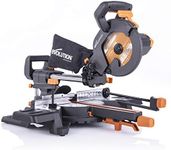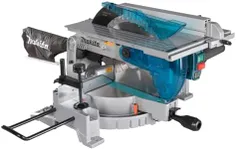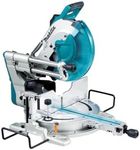Buying Guide for the Best Mitre Saws
When choosing a mitre saw, it's important to consider the type of projects you plan to undertake and the materials you will be working with. Mitre saws are versatile tools used for making precise crosscuts and mitres in a workpiece, typically wood. They are essential for tasks like framing, molding, and other carpentry work. Understanding the key specifications will help you select a mitre saw that best suits your needs, ensuring efficiency and accuracy in your projects.Blade SizeThe blade size of a mitre saw determines the depth and height of the cut it can make. Common blade sizes are 8, 10, and 12 inches. A larger blade can cut through thicker and wider materials, making it suitable for larger projects like cutting lumber or large moldings. If you are working on smaller projects or need more precision, a smaller blade might be more appropriate. Consider the types of materials and the size of the cuts you will be making to choose the right blade size for your needs.
Motor PowerMotor power in mitre saws is measured in amps, and it indicates the saw's ability to cut through materials. Higher amp motors provide more power, which is beneficial for cutting through dense or thick materials. For heavy-duty tasks, a motor with higher amps (around 15 amps) is ideal. For lighter tasks or occasional use, a lower amp motor (10-12 amps) may suffice. Assess the intensity and frequency of your cutting tasks to determine the appropriate motor power.
Mitre and Bevel CapacityMitre and bevel capacity refers to the angles at which the saw can cut. A mitre saw can pivot left and right for mitre cuts, and some models can also tilt for bevel cuts. Dual-bevel models can tilt in both directions, offering more flexibility. If your projects involve complex angles, such as crown molding or intricate trim work, a saw with a wide mitre and bevel range will be beneficial. For simpler projects, a basic single-bevel saw might be sufficient.
Sliding FeatureA sliding mitre saw has rails that allow the blade to move forward and backward, increasing the cutting capacity. This feature is particularly useful for cutting wider boards. If you frequently work with large pieces of wood, a sliding mitre saw can be a great asset. However, if your work primarily involves smaller pieces, a non-sliding saw might be more compact and easier to handle.
Laser GuideA laser guide projects a line onto the material, indicating where the blade will cut. This feature enhances accuracy and helps ensure straight cuts, which is especially useful for beginners or when precision is critical. If you value precision and ease of use, consider a mitre saw with a laser guide. However, experienced users who are confident in their cutting skills might not find this feature necessary.
Dust CollectionDust collection systems help manage the sawdust produced during cutting, keeping your workspace cleaner and improving visibility. Some mitre saws come with built-in dust collection ports that can be connected to a vacuum. If you work in a small or enclosed space, or if you prioritize cleanliness, a good dust collection system is important. For outdoor or occasional use, this feature might be less critical.



